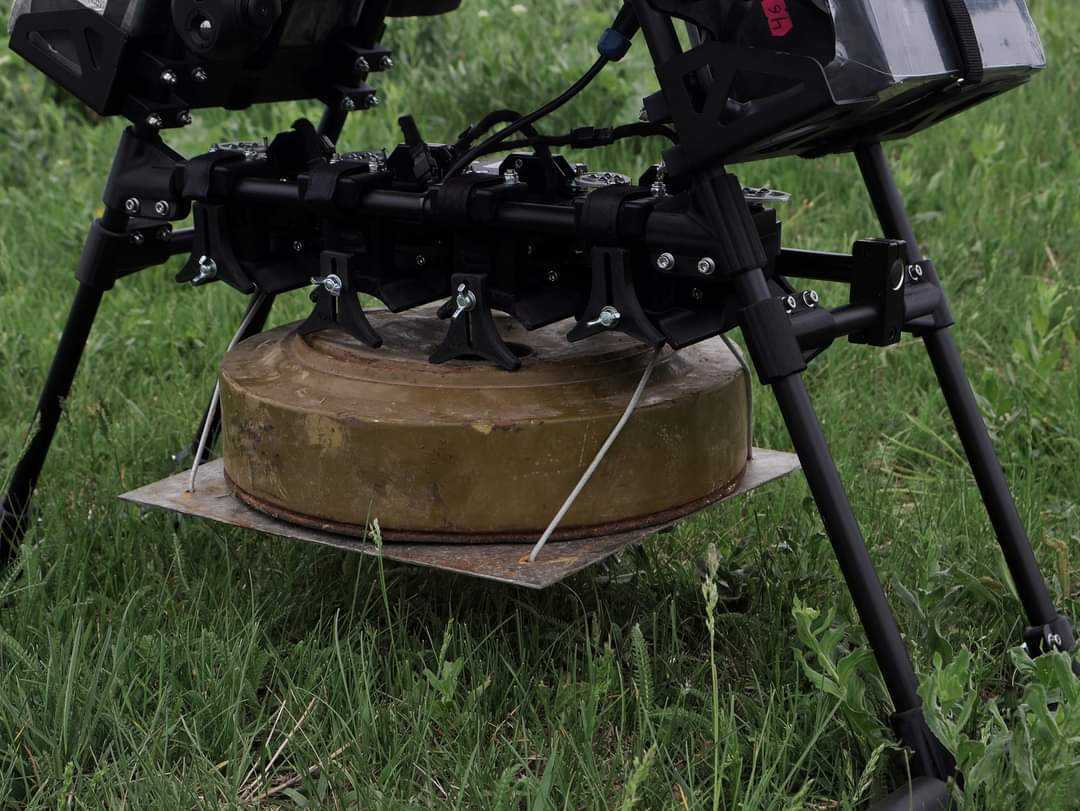Anti-Tank Mines Dropped by Ukrainian Drones Target and Damage Russian Armor

Ukrainian drone operators struck a Russian T-90M and a TOS-1 Solntsepek by dropping TM-62 anti-tank mines on them. Footage of the combat operation was posted on the 'Nebesna Mara' Unmanned Systems Battalion of the 43rd Separate Mechanized Brigade's page. The pilots of Ukrainian attack drones used heavy bomber drones to deliver modified anti-tank mines and drop them on enemy armored vehicles.
When used properly, the powerful 10-kilogram high-explosive shell can cause serious damage even to vehicles equipped with anti-drone superstructures, also known as "grills." However, the explosive devices shown in the video did not have impact initiators, so in some cases, they rolled after falling, complicating the operation.
For instance, a successfully dropped mine on the turret of an immobilized Russian T-90M tank rolled off and fell to the ground, minimizing potential damage. Previously, Militarnyi reported that Ukrainian unmanned aerial vehicle units use drones to remotely mine roads behind the invaders lines. For this purpose, 10-kilogram TM-62 anti-tank mines or their Ukrainian counterparts are mostly used.
Depending on the fuze, anti-tank mines dropped from drones can be used either as mines, or as high explosive bombs to destroy fortifications. To ensure the mine does not explode upon impact and is properly detonated, it is equipped with an electric "smart" detonator. This detonator activates on the ground some time after the mine is dropped and can operate on battery power for up to 14 days.
The mine can be triggered and subsequently detonated if it encounters any large metal objects or is moved.
To facilitate this, the detonator is equipped with a gyroscope, an accelerometer, and a magnetometer.